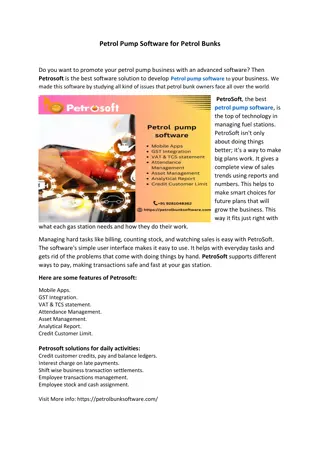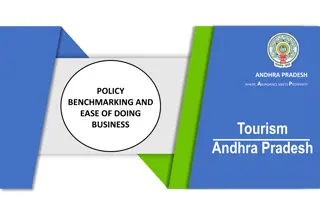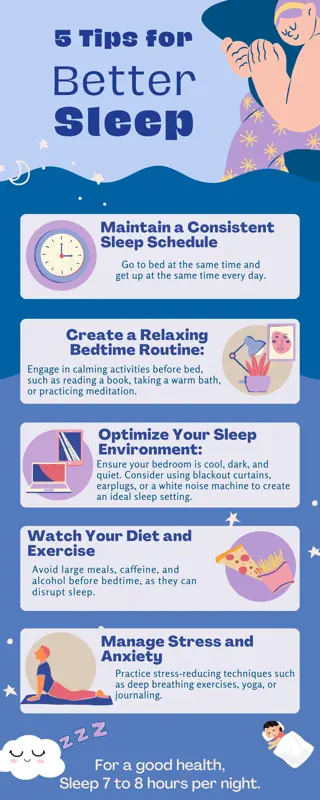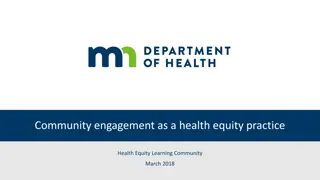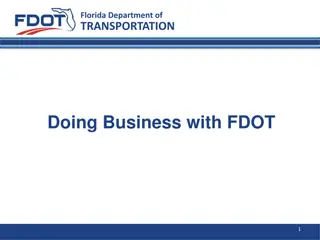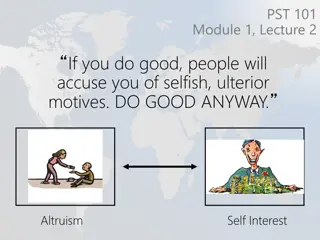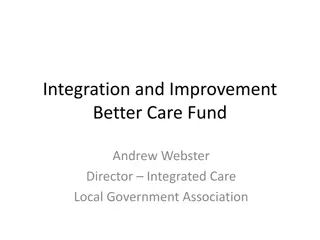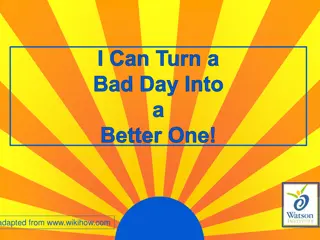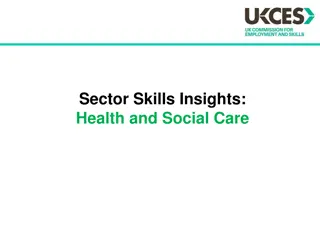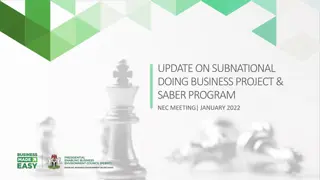DOING IT BETTER
Ideas for enhancing ICT project management in the Northern Territory Government, including suggestions for project funding, procurement processes, project champion roles, and project management methodologies.
Download Presentation

Please find below an Image/Link to download the presentation.
The content on the website is provided AS IS for your information and personal use only. It may not be sold, licensed, or shared on other websites without obtaining consent from the author.If you encounter any issues during the download, it is possible that the publisher has removed the file from their server.
You are allowed to download the files provided on this website for personal or commercial use, subject to the condition that they are used lawfully. All files are the property of their respective owners.
The content on the website is provided AS IS for your information and personal use only. It may not be sold, licensed, or shared on other websites without obtaining consent from the author.
E N D
Presentation Transcript
DOING IT BETTER Ideas to improve ICT projects in the NTG Submission to the Legislative Assembly Public Accounts Committee s Inquiry into Management of ICT Projects Author: David Chatterton, Managing Director, Radical Systems
PROJECT FUNDING Make it easier to carry over project funding across financial years. Too many shortcuts and poor decisions and outcomes are a result of this one constraint.
PROCUREMENT Where feasible consider making Design Finalisation (i.e. where a short-listed tenderer works with you to design a solution) a part of the tender assessment. Where feasible consider getting a WORKING Proof of Concept (Poc) as a part of the tender assessment before signing a contract. Sharpens the mind of tenderers. Pay a reasonable amount for the above work and be prepared to throw it away and start again with the next short-listed tenderer.
BIGGER IS NOT BETTER Long ago there was a saying that No-one ever got fired for buying IBM . Nowadays the opposite often makes more sense. How many more AMS style project catastrophes do you need before this becomes self-evident. The NT has a number of high quality people working in small local companies hidden gems that understand the way the NTG works, waiting to be given an opportunity to perform. Bring in high paying interstate consultancies ONLY for truly unique specialist skills - the local industry can handle > 80%-90% of all IT projects that have ever been attempted by the NTG.
CHAMPIONS AND BUSINESS SYSTEM OWNERS Every project needs a champion preferably one that stays the course of the project. BSOs also need to stay the course of the project. For large integration projects may need multiple BSOs for sub-systems. Above rule applies. Get the right Project Board one that can make decisions and is supportive but also probing and challenging. Spend time truly understanding and detailing your business requirements (get a professional Business Analyst if you can t) and let the industry propose solutions for these requirements. Too often requirements are poorly understood long into a project. You do not have to know every requirement we have sound methodologies to deal with changing requirements. But you need to first accept the commitment and work that comes with an Agile approach.
PROJECT MANAGEMENT Project Management Methodologies (all methodologies for that matter) must DIRECTLY support the outcomes and objectives of the project. If they don t, ditch that aspect of the methodology or find a different one. Do not hide behind a methodology it s no substitute for real world experience. Preferably find a PM that has both. Management By Walking Around and direct personal communication is still the best method for getting things done. Sending a lengthy email is a poor substitute. Ask yourself if you need to Cover Your Ass (CYA) all the time if you do, then you have the wrong champion and/or project board or they simply don t trust you. If you can t change this, then leave. Stakeholder engagement is not just a buzzword practice it.
SUBJECT MATTER EXPERTS AND TESTERS MUST be freed up to focus on the project when needed this means backfilling as necessary. Availability is NOT a skill-set. Put forward your most knowledgeable business persons to represent your business interests on a project, not just the least busy person. Must be available to work on the project when needed.
USER ACCEPTANCE TESTING IS EVERYTHING Timely and focused UAT is key to any successful development or deployment. Choose the right testers. Ensure your testers represent the end users as well being supportive of the new business objectives.
ITERATE Manage scope but be responsive to change. Release working product early and often. Iteration and feedback is the best way for everyone on the project to learn. Keep the iterations as short as possible given the nature of the project. If you accept the above, then know that Agile and SCRUM are techniques that provide a proven method to achieve it for software development. Essentially they provide a risk management strategy to mitigate against runaway software development projects insist that your Project Manager understands and considers it as a default.
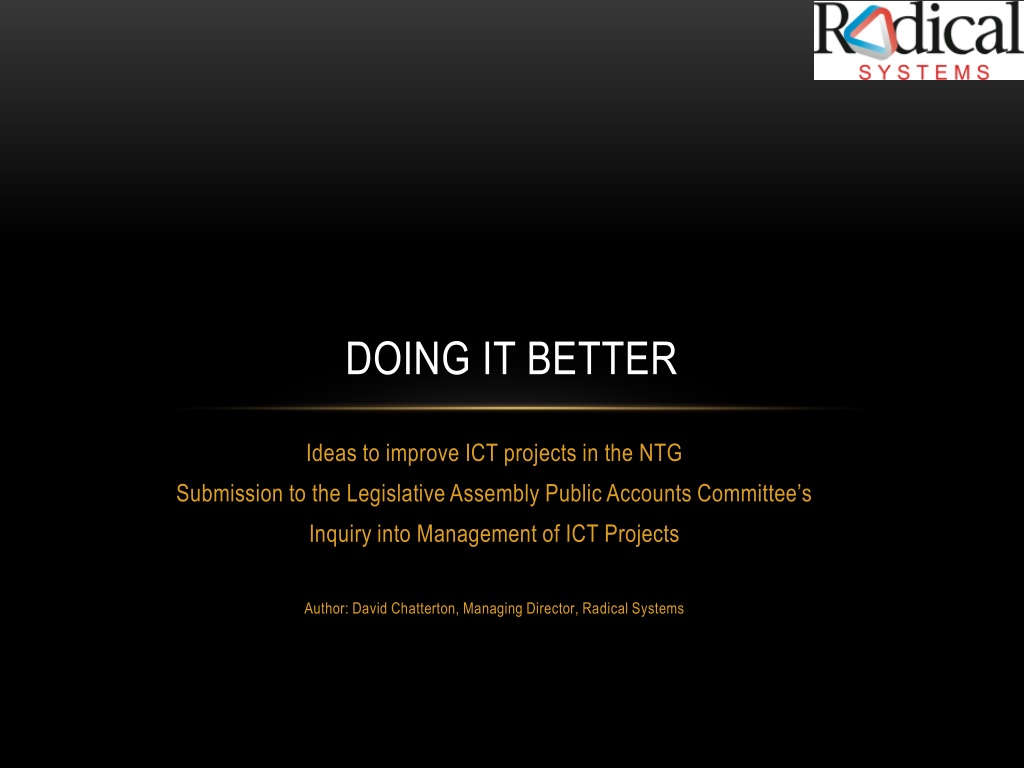

![❤Book⚡[PDF]✔ Doing the Impossible: George E. Mueller and the Management of NASA’](/thumb/21684/book-pdf-doing-the-impossible-george-e-mueller-and-the-management-of-nasa.jpg)
